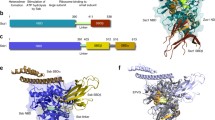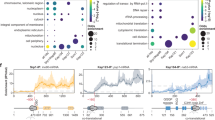Abstract.
A central dogma in biology is the conversion of genetic information into active proteins. The biosynthesis of proteins by ribosomes and the subsequent folding of newly made proteins represent the last crucial steps in this process. To guarantee the correct folding of newly made proteins, a complex chaperone network is required in all cells. In concert with ongoing protein biosynthesis, ribosome-associated factors can interact directly with emerging nascent polypeptides to protect them from degradation or aggregation, to promote folding into their native structure, or to otherwise contribute to their folding program. Eukaryotic cells possess two major ribosome-associated systems, an Hsp70/Hsp40-based chaperone system and the functionally enigmatic NAC complex, whereas prokaryotes employ the Trigger Factor chaperone. Recent structural insights into Trigger Factor reveal an intricate cradle-like structure that, together with the exit site of the ribosome, forms a protected environment for the folding of newly synthesized proteins.
Similar content being viewed by others
Author information
Authors and Affiliations
Corresponding author
Additional information
Received 29 June 2005; received after revision 4 August 2005; accepted 18 August 2005
Rights and permissions
About this article
Cite this article
Wegrzyn, R.D., Deuerling, E. Molecular guardians for newborn proteins: ribosome-associated chaperones and their role in protein folding. Cell. Mol. Life Sci. 62, 2727–2738 (2005). https://doi.org/10.1007/s00018-005-5292-z
Published:
Issue Date:
DOI: https://doi.org/10.1007/s00018-005-5292-z




